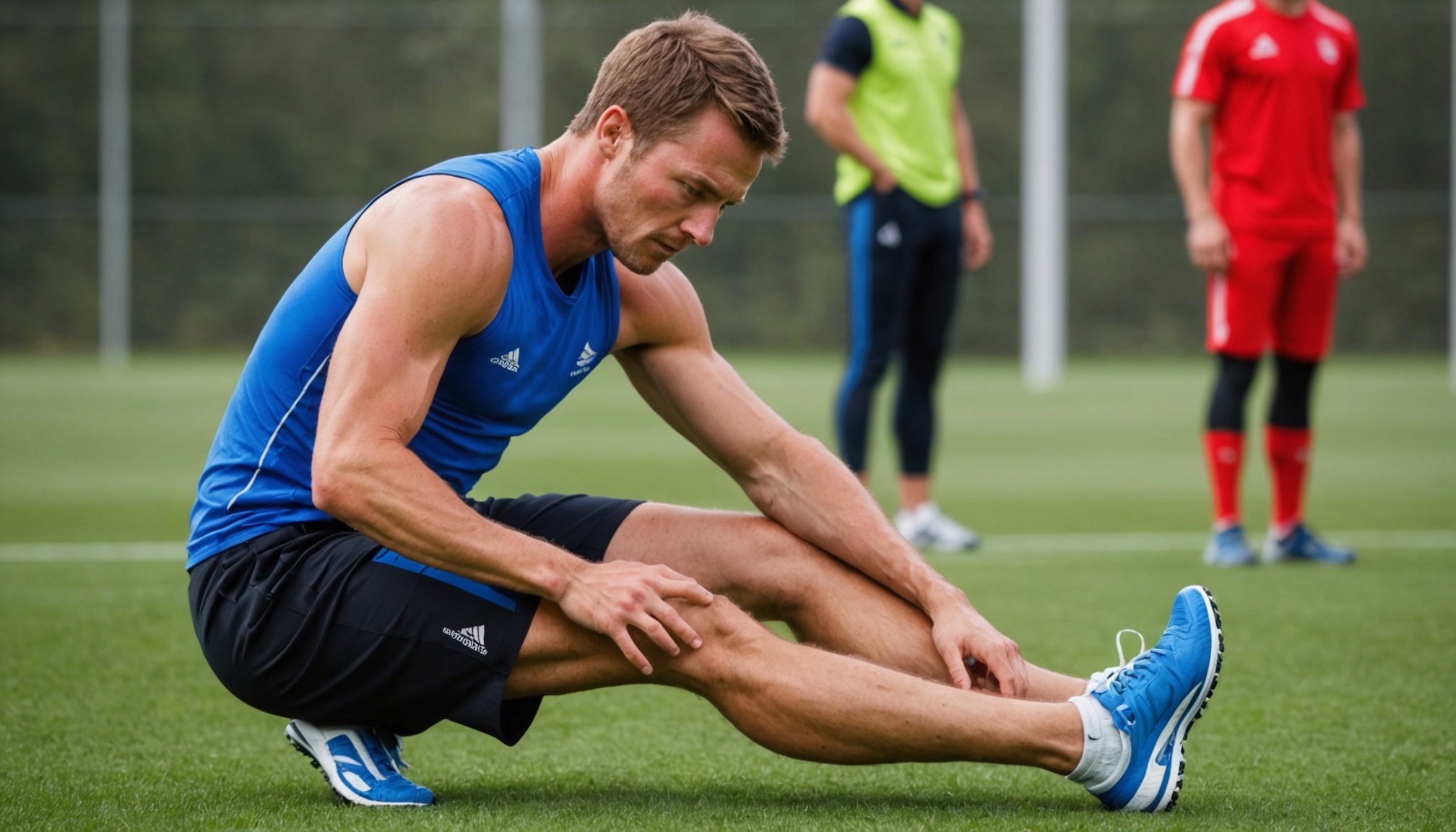Importance of Stretching for Athletes
Athletes of all levels can benefit significantly from incorporating stretching into their routines. Stretching not only enhances flexibility but also improves overall athletic performance. By increasing the range of motion in muscles and joints, athletes can execute movements with improved efficiency and reduced risk of strain. Optimal flexibility supports powerful and fluid actions, whether sprinting, jumping, or changing direction quickly.
Injury Prevention
Stretching is pivotal in reducing the risk of injuries. It helps prepare muscles for intense activity, increases blood flow, and warms up the body, making tissues more pliable and less prone to tears. Regular stretching also assists in maintaining muscle balance, which is crucial in preventing overuse injuries common in sports.
Also to see : Elevating team unity: effective techniques for enhancing cohesion in uk rowing clubs
Performance Enhancement
Effective stretching routines aid in reaching peak athletic performance by improving muscle elasticity and endurance. A well-stretched muscle can generate more force over a longer period, leading to enhanced stamina and power output. Additionally, consistent stretching promotes quicker recovery post-exercise, allowing athletes to train more efficiently and frequently. Through dedicated stretching, athletes not only safeguard against injuries but also push the boundaries of their performance capabilities.
Dynamic Stretching Techniques
Dynamic stretches are essential components of pre-activity routines for enhancing agility and flexibility. Unlike static stretches, they involve active movements that help elevate heart rates and increase muscle temperature. This prepares the body for more intense workouts by improving mobility and reducing the risk of injury.
Additional reading : Transforming sports training: how virtual reality is shaping the future of uk athletic teams
Best Practices for Dynamic Stretching
To maximise the benefits of dynamic stretching, it’s crucial to follow best practices. Start with gentle movements, gradually increasing in intensity. Duration typically lasts between five to ten minutes, ensuring muscles are adequately warmed up. It’s essential to focus on full-range motion, which can help in loosening up the joints while enhancing flexibility.
Examples of Dynamic Stretches for Different Sports
Various dynamic stretches cater to specific sports needs. For instance, high knee marches and butt kicks are excellent for runners. Arm circles and torso twists are ideal for swimmers. Each stretch targets the main muscle groups used in those activities, thereby enhancing sport-specific performance.
Incorporating Dynamic Stretching into Warm-Up Routines
Incorporating dynamic stretching into warm-up routines can be a seamless process. Begin with three to five dynamic stretches specific to the sport or activity, maintaining consistency in frequency. This routine not only fosters muscular agility but also strengthens one’s foundation for injury prevention.
Static Stretching Techniques
Static stretching is a key component for flexibility improvement and contributes significantly to post-activity recovery. It involves holding a stretch for an extended period, typically 15-60 seconds, allowing the muscle to elongate and relax. This technique is particularly useful after physical activities as it aids in reducing muscle stiffness and soreness.
Best Practices for Static Stretching
When engaging in static stretches, it’s crucial to focus on proper form and breathing. Gradually ease into the stretch until you feel tension, but never pain. Hold the position steadily, maintaining deep, even breaths. This helps your muscles relax and extends the benefits of the stretch.
Effective Static Stretches for Major Muscle Groups
Some effective static stretches include the hamstring stretch, quad stretch, and triceps stretch. For the hamstring, sit with legs extended, reaching for your toes. The quad stretch can be done by standing and pulling one foot towards the buttocks. A triceps stretch is achieved by reaching one arm across your body. Each stretch should prioritize comfort and consistency.
Timing Static Stretching for Optimal Recovery
To maximize post-activity recovery, static stretching should ideally occur after a workout when muscles are warm and pliable. Hold each stretch for 15-60 seconds, with at least 2-3 repetitions per muscle group. This timing enhances blood flow and accelerates the recovery process, promoting overall muscle health.
Sport-Specific Stretching Guidelines
When it comes to optimizing athletic performance, tailored routines are essential. Each sport has unique demands, making sport-specific stretching crucial. For example, a gymnast requires extensive flexibility in the joints and muscles, while a sprinter benefits more from dynamic stretching that promotes quick muscle response. These tailored routines ensure that athletes maximize their performance while minimizing the risk of injury.
In popular UK sports like football and rugby, stretching routines focus on enhancing flexibility in the leg muscles, such as hamstrings and quadriceps, crucial for sudden sprints and directional changes. Similarly, swimmers frequently stretch their shoulders and upper body to boost their range of motion and improve stroke efficiency.
Assessing each athlete’s needs is vital. Individual evaluations help identify areas requiring additional flexibility or strength development. These assessments inform a personalized stretching plan, accommodating everyone’s specific physiologic requirements. By focusing on individual athlete needs, coaches can cater to personal goals while ensuring overall well-being and effective performance.
The Science Behind Stretching and Injury Prevention
Injury prevention is a significant concern for athletes and individuals engaged in regular physical activity. Recent research has shed light on the role of muscle elasticity in reducing injury risk. Studies suggest that increasing muscle elasticity through stretching can enhance performance and decrease the likelihood of injuries.
Muscle elasticity refers to the ability of a muscle to return to its original length after being stretched. This property is crucial in absorbing impact and preventing strains or tears. Research indicates that dynamic stretching, which involves active movements that stretch the muscles, can improve muscle elasticity more effectively than static stretching. By incorporating dynamic stretches into a routine, individuals may enhance their flexibility while also benefiting from better injury prevention.
Stretching protocols have evolved with evidence-based guidelines, emphasizing the importance of specificity and regularity in a stretching routine. Targeting the specific muscle groups used in one’s sport or activity is essential. Adequate warm-up and cool-down phases, including controlled dynamic stretching, have shown benefits in maintaining muscle health and reducing injury risks. As the understanding of injury prevention science grows, tailoring stretching routines to individual needs and activities becomes ever more critical for both professional athletes and fitness enthusiasts.
Incorporating Stretching into Training Regimens
Effective strategies for integrating stretching integration into daily training routines can greatly enhance athlete performance. A structured stretching plan is essential for optimising training plans. This involves not only making time for stretching but also choosing the right types tailored to specific training needs.
One effective approach is to incorporate stretching into warm-up and cool-down sessions. This ensures that stretching becomes a habitual part of existing training plans, rather than an added burden. Dynamic stretching during warm-ups can prepare the body for intensive activity, while static stretching post-training aids in recovery and flexibility.
Athlete development benefits significantly from stretching integration. Enhanced flexibility can lead to improved performance and reduced injury risk. Furthermore, a well-rounded stretching program supports muscle balance and joint stability, crucial for sustaining long-term athletic development.
To maintain consistency and motivation, setting clear goals within stretching practices is imperative. Consider tracking progress over time, such as increased flexibility or decreased recovery times. Additionally, varying routines can keep athletes engaged and motivated, ultimately embedding stretching into their training culture.
Incorporating these strategies in training plans not only optimises athletic performance but ensures holistic development for athletes.
Visual and Multimedia Resources
For those who learn best through visual aids, there is a plethora of stretching videos available. Platforms like YouTube host a myriad of instructional videos demonstrating a range of stretching techniques. These demonstrations cater to various skill levels, providing resources for both beginners and seasoned athletes.
Instructional Videos for Stretching Techniques
Short, targeted videos often include tips on maintaining proper posture and avoiding common mistakes. Importantly, these resources emphasize consultation with a professional to ensure techniques are executed correctly, safeguarding against injury.
Illustrated Stretching Guides for Athletes
In addition to videos, illustrated stretching guides offer step-by-step visual instructions, catering to those who prefer still images over dynamic demonstrations. These guides use diagrams to outline specific body movements, making them particularly useful for athletes seeking to enhance flexibility and performance.
Testimonials from UK Athletes on Stretching Importance
UK athletes frequently provide testimonials highlighting the role of stretching in their routines. They share personal stories of how consistent stretching has led to improved performance and reduced injury frequency, underscoring the importance of this practice in athletic success.
Conclusion and Next Steps
Creating personalized stretching plans is pivotal for athletes aiming to prevent injuries and improve performance. Tailoring these plans ensures that stretching routines cater to individual needs, addressing specific muscle groups and past injury concerns. It’s beneficial for athletes to regularly review and modify their plans, keeping their personal goals and challenges in mind.
Incorporating follow-up routines into daily practice encourages consistency, which is vital for long-term benefits. After initial stretching sessions, athletes should follow up with routines that progressively adapt, allowing their bodies to adjust and improve. Regular assessments can help track effectiveness and make necessary adjustments, ensuring maximum benefit and injury reduction.
For continuous improvement in injury prevention, engaging with available resources is advantageous. Literature on athlete care, workshops, and expert consultations can offer substantial education in refining techniques and expanding knowledge. These resources provide insights into advanced stretching methods and innovations in athletic care, fostering comprehensive athlete development.
Ultimately, commitment to a customized approach and proactive education empowers athletes to not only maintain peak physical condition but also enhance their overall performance. By taking these steps, athletes can pave a successful path in their athletic endeavours.











